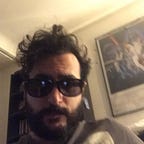WHAT MAKES A GOOD SEQUEL?
Or what we can learn from late 18th Century philosophy.
Sequels are Hollywood’s bread and butter, but not all of them work. Only a tiny minority of sequels are regarded as highly as the original.
Why is this? We’ve been making sequels since 1916, but we still haven’t figured out the precise alchemical process that makes the perfect continuation of an original story. Some become instant classics, like The Godfather 2, others fall into the pit of forgettable mistakes, like Speed 2.
I want to take a quick but sharp look at a sequel that is considered better than the original and try to figure out what made it work. Let’s pop open this clock and analyze which are the cogs and springs that make it tick so precisely.
No, I’m not going to tackle The Godfather 2. Today will be looking at Jurassic Park 2.
Sike! You thought!
We’ll be looking at The Dark Knight.
First off let’s start with the basics. What is a sequel? A sequel is a continuation of the story. ‘Continuation’ being the essential part here.
You might think this is plainly obvious, but here is where many fail. A lot of sequels make two critical mistakes, they either a) Try to make the same story again in a different setting (i.e., Die Hard 2 or Speed 2), or b) They do away with the growth the characters experience in the original (i.e., The Incredibles 2 or Pirates of The Caribbean 4). Doing this turns the sequels into poorly disguised remakes.
The Dark Knight picks up emotionally and intellectually where Batman Begins left off. In the original, Batman makes his superhero debut, and we learn his tragic and character-defining past. These will be the building blocks of The Dark Knight. They don’t need to explore that again; now the writers can go deeper into the consequences of his actions and the study of his psychology.
The audience knows who the main character is, and the creators waste no time doing a reintroduction. Instead, the writers introduce the villain of the film, which is the total opposite of the titular character.
Whereas one is order and control, the other is anarchy and chaos.
The Joker works perfectly because he is the counterpart of the character introduced in the first film. It effectively turns the original film into a feature-length first act. Which is what all sequels should aim at.
In the original, the creators explored the idea of order through fear. That’s what Batman represented, something all criminals could have nightmares with. They spend a whole movie building on that idea. So, how can they increase the stakes for the second one? They don’t need a character that’s stronger than Batman; they need something that is a logical continuation of the ideas explored in the first one.
What if the villain has no fear? Cue in: The Joker. The only man Batman can’t intimidate.
It keeps the principle of continuation going. Even though it is a different story, is an argument that spurs as a consequence of the idea clash of the first film.
Let’s go a bit deeper.
You’ve heard of stories being broken-down into the first act, second act, and third act, right? Fantastic. Another way to look at them is through a Hegelian perspective. Bet you didn’t think we were going to get into late 18th Century German philosophy. Neither did I.
The first act will be the Thesis, the rise of an idea or action; The second act will be the Antithesis, which opposes and contradicts the Thesis; The third Act is the Synthesis, the resulting conclusion after the tension between the first two is resolved.
Thesis + Antithesis = Synthesis.
I’m sure there are better explanations for Hegelian dialectics online, but this is good enough for our purposes.
The Dark Knight takes the Synthesis of the first film and uses it as the Thesis of the new story. Is this the movie version of dialectic materialism? Maybe.
Enough armchair philosophy. Let’s get back to the film.
The Joker pushes Batman into a breaking point. The first film was about making Batman into an “idea,” something bigger than a man. So The Joker creates tests to see how strong the concept of ‘Batman’ really is. That’s why he kills a person every day if Batman doesn’t reveal himself. His challenging the idea of Batman by putting pressure on the man behind the cowl.
Bruce Wayne is forced to face the question: Which one is more important the man or the mask?
Alfred: Know your limits, Master Wayne.
Bruce: Batman has no limits.
Alfred: Well you do, Sir.
The choices Batman makes revel who he truly is. That’s why he has to choose between saving Rachel or Harvey Dent; Bruce goes for Rachel. Batman is in the backseat of the psyche, locked. But this choice kills Rachel which effectively kills Bruce Wayne.
If Batman wants to take down The Joker, whatever is left of Bruce Wayne must wither and die.
The Joker makes Batman into a better version of himself. This New-Batman is the Synthesis of the sequel.
The idea of Batman becoming a regular hero is left behind; Batman will be from now on the tool that Gotham needs. More of a plumber than a savior.
Whatever role he’ll need to play, he’ll play it.
So… What makes a sequel good?
Many many things go into what makes a sequel “good,” but I think the most important aspect is continuing the conversation the creators started with the audience during the first film.
Audiences are smart; they will notice if they are being taken advantage off. Making a sequel is hard because you have to come up with new questions to challenge the answers that took you so long to get at the first time around. But that’s what the audience is here for.
Let’s give it to them.
